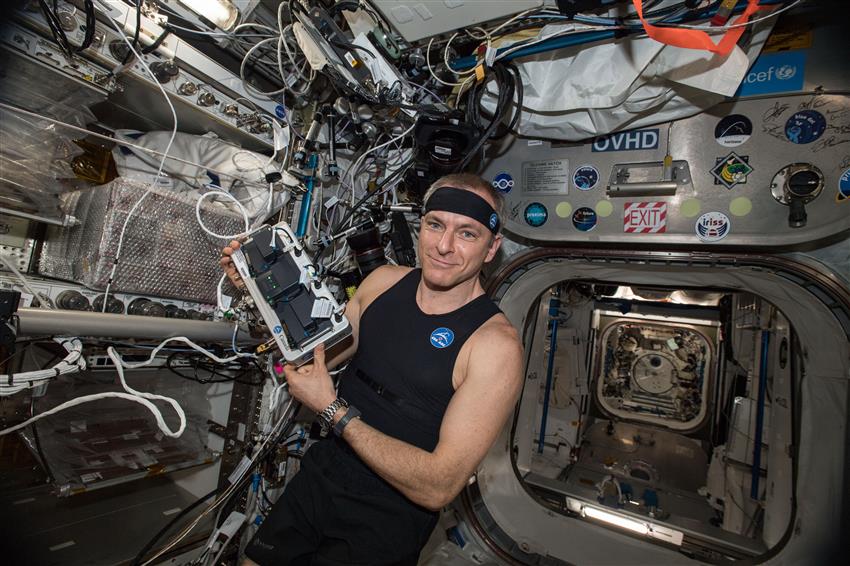The Space Health study: Using space flight to improve how we monitor health on Earth
The Space Health study uses Bio-Monitor data, analyzed by an AI computing platform, to determine how space flight affects astronauts' cardiovascular systems.
Background
Space flight is hard on the body. Low levels of gravity, exposure to radiation, increased stress – these factors affect an astronaut in ways that can lead to cardiovascular disease. Researchers are working to better understand the effects of space flight on the human body so they can find ways to keep astronauts as healthy as possible.
The Canadian-made Bio-Monitor smart shirt system includes a garment that records large volumes of data, including an astronaut's heart rate, respiration rate, blood oxygen levels and more. Once the complex data is gathered, it needs to be analyzed in detail.
Researchers leading the Space Health study use an artificial intelligence (AI) computing platform called Artemis to generate insightful health information based on data that the Bio-Monitor gathers during space missions. The platform uses AI algorithms to find patterns and identify risks in large sets of medical data, like the sets that the Bio-Monitor produces. Artemis's advanced analysis can provide vital information to caregivers.
Objectives
The Space Health study aims to:
- assess how astronauts' cardiovascular systems function on the International Space Station – in particular, the deconditioning that typically happens during space flight.
Impacts on Earth
By using Bio-Monitor health data from astronauts, the research team and inventors of Artemis are not only working to improve astronaut health, but also using space flight to further test and refine a platform that can help improve our health on Earth.
Artemis was first used in neonatal intensive care units, to monitor the vital signs of premature infants whose bodies were adapting to life outside the womb. It has also been used to monitor the health of firefighters, tactical officers, and military personnel working to save lives in extreme climates.
How it works
Ten astronauts are participating in this experiment:
- Before, during, and after their flights, astronauts use the Bio-Monitor to measure their heart rates, respiration rates, and blood oxygen levels for 48 continuous hours.
- Researchers use exercise and activity information, and a wellness questionnaire to assess how astronauts' cardiovascular systems react to space flight and other forms of stress.
- The Artemis platform is used on Earth to store, analyze and visualize the health data collected by the Bio-Monitor.
The research team and creators of Artemis are working with space communications company CommStar to speed the download of data from the International Space Station. With the new approach, large amounts of data could be live-streamed through a new optical deep-space network using satellites such as the proposed CommStar-1.
Timeline
The Space Health study team began collecting data in and should conclude in .
Research team
Principal investigator
- Dr. Carolyn McGregor, AM, Ontario Tech University

